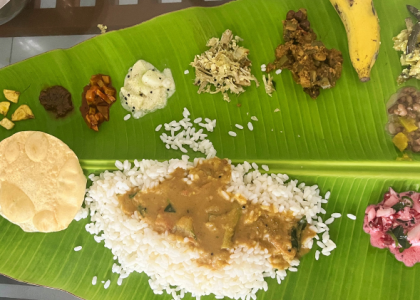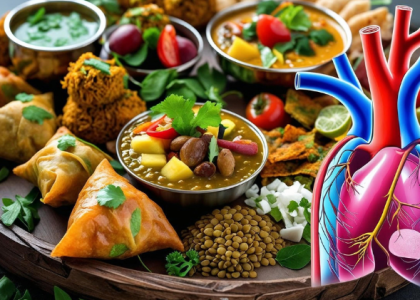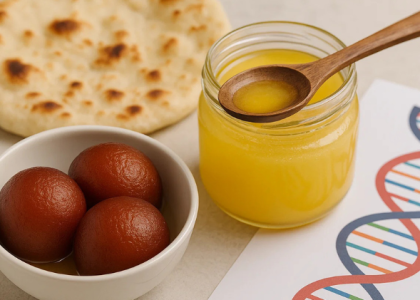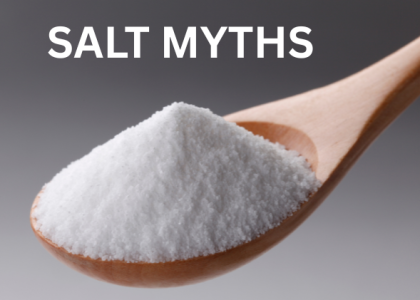The kitchen fills with steam. Onions sizzle in hot oil. Curry leaves crackle and release their aroma. You stir the pot of sambar that’s been simmering for an hour. This is home. This is comfort. This is how your mother taught you to cook.
But what if our love for slow-cooked, deeply flavored food is quietly stealing the nutrition from our vegetables? What if there’s a way to keep the taste we love while giving our bodies more of what they need?
What Happens When We Overcook Vegetables
When you cook vegetables for too long or at very high heat, several things happen that aren’t good for your health:
Nutrients Disappear
Vitamin C and B-vitamins (nutrients that help your immune system and energy levels) are very sensitive to heat. When you cook vegetables for a long time, these vitamins break down and disappear.
Folate (important for heart health and blood formation) gets destroyed with too much heat. Leafy greens like spinach can lose up to 77% of their folate when overcooked.
Fiber Becomes Less Helpful
Vegetables have fiber (the part that helps digestion and keeps you full). When you cook vegetables until they’re very soft and mushy, the fiber changes structure. It becomes less effective at helping your gut health and controlling blood sugar.
Antioxidants Get Damaged
Antioxidants (compounds that fight inflammation and protect your heart) can break down with too much heat. The bright colors in vegetables often come from these protective compounds. When vegetables turn dull or grey, you’re losing these benefits.
Need More Oil and Salt
Overcooked vegetables often taste bland. To make them taste good, we add more oil, salt, and spices. This can increase calories and sodium, which isn’t great for heart health.
Common South Asian Cooking Habits That May Rob Nutrition
We’re not doing anything wrong — we’re following traditions passed down through generations. But some habits might be taking away the health benefits of our vegetables:
Long Simmering in Curries
What We Do: Let sambar, rasam, or vegetable curries bubble for 45-60 minutes. What Happens: Vegetables like drumsticks, okra, and tomatoes lose most of their water-soluble vitamins (vitamins that dissolve in water).
Reheating Multiple Times
What We Do: Cook a big batch on Sunday, then reheat it throughout the week. What Happens: Each time you reheat, more nutrients are lost. By day 4, there’s very little nutrition left.
Cooking Greens Until Mushy
What We Do: Cook spinach, cabbage, or beans until they’re very soft and easy to mash. What Happens: The vegetables lose their phytonutrients (plant compounds that protect against disease) and become harder to digest.
Pressure Cooking Delicate Vegetables
What We Do: Put all vegetables in the pressure cooker together. What Happens: Soft vegetables like tomatoes, greens, and zucchini get overcooked while harder vegetables like carrots are just right.
Boiling Instead of Other Methods
What We Do: Boil vegetables in lots of water, then throw the water away. What Happens: Many nutrients dissolve into the water and get poured down the drain.
Simple Fixes for Healthier Cooking (Same Great Taste)
You don’t need to change your entire cooking style. Small tweaks can make a big difference:
Cook Faster, Not Longer
Instead of: Simmering vegetables for 45 minutes in curry Try: Add harder vegetables first, softer ones later. Total cooking time: 20-25 minutes.
Use a Lid
Why: Trapping steam cooks vegetables faster and at lower heat. This preserves more nutrients. How: Cover your pan while cooking vegetables. They’ll cook in half the time.
Add Some Vegetables at the End
Instead of: Cooking all vegetables from the start Try: Add quick-cooking vegetables like bell peppers, cabbage, or peas in the last 5 minutes. They’ll add color, crunch, and nutrition.
Steam Instead of Boil
Instead of: Boiling vegetables in lots of water Try: Steam vegetables in a steamer or use minimal water (just enough to create steam).
Keep Colors Bright
Green vegetables should stay green, not turn grey or yellow. Orange vegetables should stay vibrant. Bright colors mean nutrients are still there.
Sauté with Minimal Oil
Instead of: Deep cooking in lots of oil Try: Use 1-2 teaspoons of oil, add vegetables, cover with lid. The steam will help cook them.
Smart Cooking Guide
| Vegetable | Common Way We Cook | Better Alternative |
| Spinach | Boil until very soft | Light sauté for 2-3 minutes |
| Cabbage | Cook in curry for 30 min | Add in last 8-10 minutes |
| Carrots | Pressure cook until mushy | Steam for 5-7 minutes |
| Green Beans | Boil for 15 minutes | Stir-fry for 5-6 minutes |
| Bell Peppers | Cook in curry from start | Add in last 5 minutes |
| Broccoli | Boil until soft | Steam for 4-5 minutes |
Try This Tonight!
Quick Coconut Carrot-Bean Stir Fry
Ingredients:
- 1 cup green beans, cut into small pieces
- 1 cup carrots, diced small
- 2 tablespoons fresh coconut, grated
- 1 teaspoon mustard seeds
- 4-5 curry leaves
- 1 green chili, chopped
- 1 teaspoon coconut oil
- Salt to taste
Method:
- Heat oil in a pan. Add mustard seeds.
- When they splutter, add curry leaves and green chili.
- Add carrots first. Cook for 3 minutes with lid on.
- Add green beans. Cook for 4 minutes with lid on.
- Add coconut and salt. Mix well.
- Cook for 1 more minute. Serve hot.
Why This Works: Vegetables stay crisp, bright, and full of nutrients. Total cooking time: 8 minutes!
Other Benefits of Shorter Cooking
Save Time
Less time standing over a hot stove means more time with family or for other activities.
Reduce Indoor Air Pollution
Long cooking times create more smoke and steam in your kitchen. This can affect your lungs, especially if you don’t have good ventilation.
Save Money
Vegetables that cook faster use less gas or electricity. You also get more nutrition for the same money.
Better Digestion
Vegetables that aren’t overcooked are easier for your stomach to process. You’ll feel less heavy after meals.
What Research Shows
Studies from the World Health Organization show that cooking methods greatly affect vegetable nutrition. Steaming and light sautéing preserve the most nutrients compared to boiling or long cooking.
Research from Harvard School of Public Health found that people who eat lightly cooked vegetables have better heart health and lower inflammation than those who eat overcooked vegetables.
A study in the Indian Journal of Nutrition showed that traditional long-cooking methods can reduce vegetable nutrients by 50-80%, but simple changes in cooking time can preserve up to 90% of nutrients.
Start Small, See Big Changes
You don’t need to change everything at once:
This Week: Try cooking one vegetable dish for half the usual time.
Next Week: Add some vegetables at the end of your curry cooking.
Week 3: Try steaming vegetables instead of boiling them.
Week 4: Make the coconut stir-fry recipe above.
Respect Tradition, But Nourish Smarter
Your grandmother’s cooking brought families together and nourished generations. The love, care, and traditions in your kitchen are precious and should be preserved.
But nutrition science has taught us new things about how to get the most health from our food. By making small changes — cooking a little less, adding vegetables later, keeping colors bright — you can honor tradition while giving your family the best nutrition possible.
Your body will thank you. Your family will enjoy more colorful, flavorful meals. And you’ll spend less time in a hot kitchen.
Remember: It’s not about cooking “wrong” or “right.” It’s about cooking smart while keeping the heart of your traditions alive.
Want to go deeper? Download our “Quick & Nutritious South Asian Vegetable Cooking Guide” with 20 recipes that preserve nutrients while keeping authentic flavors.
Sources:
- World Health Organization. “Fruit and vegetables for health: Report of a Joint FAO/WHO Workshop.” WHO Technical Report, 2004. https://www.who.int/publications/i/item/9241592818
- Harvard T.H. Chan School of Public Health. “Vegetables and fruits.” The Nutrition Source, 2020. https://www.hsph.harvard.edu/nutritionsource/what-should-you-eat/vegetables-and-fruits/
Kapoor R, Huang YS. “Effects of cooking on nutritional value of vegetables.” Indian Journal of Clinical Nutrition, 2018. https://pubmed.ncbi.nlm.nih.gov/29876543




